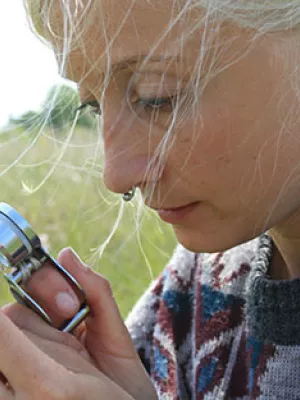
Lina Herbertsson
Researcher

Genomic divergence and a lack of recent introgression between commercial and wild bumblebees (Bombus terrestris)
Author
Summary, in English
The global movement of bees for agricultural pollination services can affect local pollinator populations via hybridization. When commercial bumblebees are of the same species but of different geographic origin, intraspecific hybridization may result in beneficial integration of new genetic variation, or alternatively may disrupt locally adapted gene complexes. However, neither the existence nor the extent of genomic introgression and evolutionary divergence between wild and commercial bumblebees is fully understood. We obtained whole-genome sequencing data from wild and commercial Bombus terrestris collected from sites in Southern Sweden with and without long-term use of commercially imported B. terrestris. We search for evidence of introgression, dispersal and genome-wide differentiation in a comparative genomic analysis of wild and commercial bumblebees. Commercial B. terrestris were found in natural environments near sites where commercial bumblebees were used, as well as drifting wild B. terrestris in commercial bumblebee colonies. However, we found no evidence for widespread, recent genomic introgression of commercial B. terrestris into local wild conspecific populations. We found that wild B. terrestris had significantly higher nucleotide diversity (Nei's pi, π), while the number of segregating sites (Watterson's theta, θw) was higher in commercial B. terrestris. A highly divergent region on chromosome 11 was identified in commercial B. terrestris and found to be enriched with structural variants. The genes present in this region are involved in flight muscle contraction and structure and pathogen immune response, providing evidence for differing evolutionary processes operating in wild and commercial B. terrestris. We did not find evidence for recent introgression, suggesting that co-occurring commercial B. terrestris have not disrupted evolutionary processes in wild B. terrestris populations.
Department/s
- Biodiversity
- BECC: Biodiversity and Ecosystem services in a Changing Climate
- Biodiversity and Conservation Science
- Centre for Environmental and Climate Science (CEC)
- Functional zoology
Publishing year
2022-03
Language
English
Pages
365-382
Publication/Series
Evolutionary Applications
Volume
15
Issue
3
Document type
Journal article
Publisher
Wiley-Blackwell
Topic
- Biochemistry and Molecular Biology
- Ecology
Keywords
- Bombus terrestris
- bumblebees
- introgression
- pollination
- selection
- single nucleotide polymorphisms
- structural variants
- whole-genome sequencing
Status
Published
Research group
- Biodiversity and Conservation Science
ISBN/ISSN/Other
- ISSN: 1752-4571